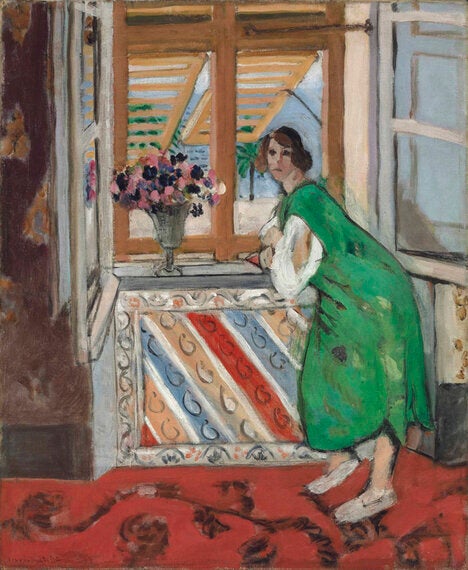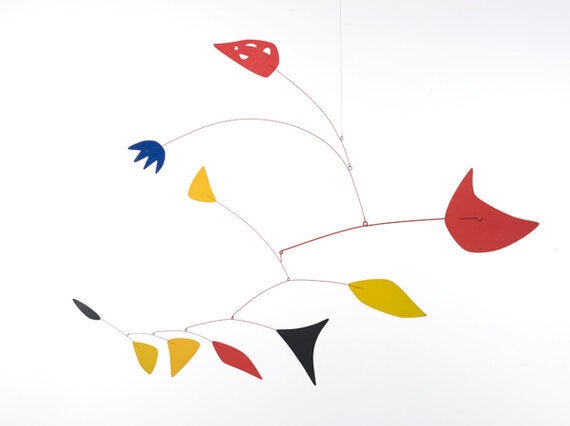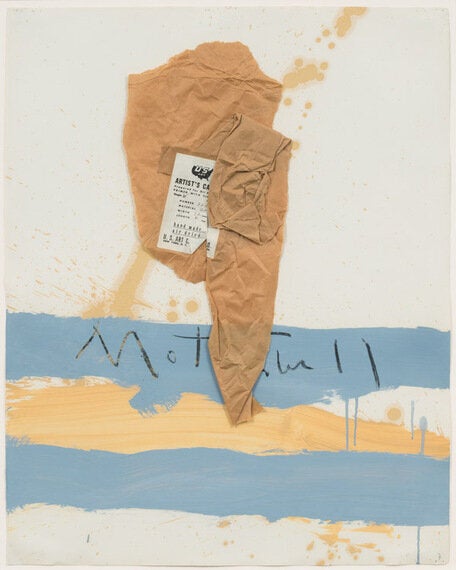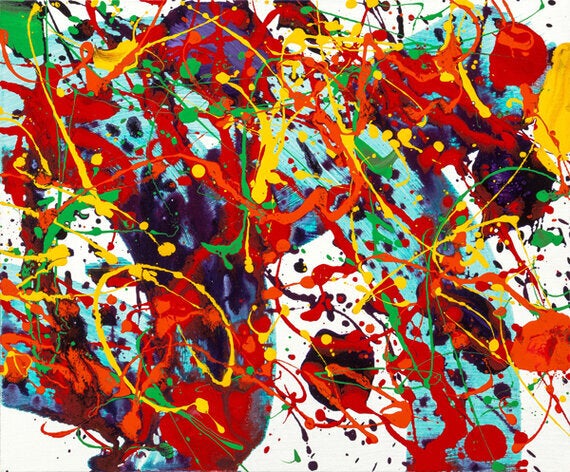Le Bonheur de vivre (The Joy of Life), one of French post-impressionist artist Henri Matisse's most famous paintings, is housed in the Barnes collection in Philadelphia.
Nevertheless, veteran gallerist Bernard Jacobson has borrowed its title for an exhibition of 16 works featuring five of his favourite artists who convey that joy of living. They begin with Matisse whom he regards as the greatest artist of the 20th century, and incorporate those through whom he can detect a direct line of influence and inspiration.
There is a sub-text to the show, however. Jacobson, as we shall see, is making a personal statement about the current state of the art world.
Matisse lies at the heart of Bonheur de Vivre and is represented by three paintings, featuring single female figures, that encapsulate the essence of the show - colour, light passion, beauty and joy.

Jeune fille a la mauresque (above) painted in 1921 exudes Mediterranean warmth, light and space as Matisse made colour the central force of his paintings. "It's with colour that you put down light of course," Matisse once said. "But of course you must feel this light, have it within yourself."

Joan Miro might have been Spanish but Jacobson regards him as an "honarary Frenchman" in the way he evokes lightness and playfulness. Femme amoureuse de l'etoile filante (1966) (above) although a minuscule (13 x 12 cms) oil on canvas, takes Matisse further through reduced linear forms, in this case the semi-abstract depiction of a woman lying beneath the open sky.
The star is blue, the moon green, while a scarlet fire-burst explodes above the gold of the waning sun. It's a picture full of energy and playfulness told through a boldness of line and harmonious colour. It's one of five Miro pictures on sale.
The joy that these pictures display Jacobson believes has been wiped out by many of today's artists championed by the movers and shakers of the art business - the Howard Hodgkins, Charles Saatchis and Nicholas Serotas of this world. Now, it's all about power and money, he maintains, and he dismisses the work of such "self-promoters" as Ai Weiwei and Anish Kapoor as "garbage". It's a controversial view, certainly, but one which exercises Jacobson greatly.
"I think the fact that (art curator and historian) Norman Rosenthal said to me 'Bernie, you've got to understand the 20th century was completely led by Duchamp' scared the hell out of me."
Bonheur de Vivre is Bernard Jacobson saying this is the kind of work I believe in, that art went down the wrong path. He assures me that it is not a safe retreat into nostalgia but quotes the French expression that you have to go backwards to go forwards, to rediscover the place where, in his view, art took the wrong fork in the road.
Coincidentally, it was Duchamp who christened as mobiles the hanging sculptures of the next artist featured, Alexander Calder. Red, yellow, white and black discs flicker in the manner of delicate ephemeral beings floating in the breeze.

One of three featured, Blue Flower, Perforated Red (above) is typical in its bold use of colour, fluid lines and use of space, and redolent of the painting technique of Matisse and Miro. Calder once said, "Above all, art should be happy and not lugubrious".
Bernard Jacobson has been dealing in art for 45 years. His career began in the 1960s working in a gallery during a stay in New York in which he mixed with the likes of Roy Lichtenstein, Claes Oldenburg, James Rosenquist, Frank Stella and Andy Warhol. His admiration for these post-war American modernists never left him. Yet, it was the only one of this group he never properly met, Robert Motherwell, whom he grew to love above all others including even Jackson Pollock and Mark Rothko. Indeed, Jacobson published a biography of Motherwell last year.

Motherwell's 1962 collage U.S. Art New York N.Y. (above), has that same warm playfulness harking back to Matisse and Miro. Indeed, Motherwell once remarked that seeing Matisse "shot him to his heart like an arrow".
The piece depicts a beach scene with waves rolling into the shore and sand sent soaring into the air. In the middle is the trademark collage element of a scrunched up piece of brown packing paper, perhaps a banal reminder of reality to contrast with the vibrancy and romance of the painting.

The last of the artists featured is Sam Francis whom Jacobson represented for many years. Untitled, 1994 (above) is an explosion of colour and joy, a space to meditate in the abstract colour and texture. It drips with Miro and Matisse. Jacobson recalled how, when staying with Francis at his Santa Monica home, he slept under a Miro.
Bonheur de Vivre is more than a celebration of some of Bernard Jacobson's favourite painters. "It's very much my wanting people who I like to have a look at beauty. Basically, it's trying to say for God's sake stop telling me Ai Weiwei or Anish Kapoor or Jeff Koons or Damian Hirst are making art. I feel the music has to stop. I think if we're going to go on and on and on, where are we going to end up?"
Bonheur de Vivre is showing at Bernard Jacobson Gallery, 28 Duke Street St James, London SW1Y 6AG, until 27 May.
All images are used courtesy of Bernard Jacobson Gallery